|
The Eugene Trachtman panoramic camera Andrew Davidhazy andpph@davidhazy.org www.davidhazy.org/andpph I have noticed several times that often when someone claims to have invented something new the idea has already occurred to someone else in the past and sometimes the distant past. This has happened to me several times although I don't think I ever claimed to have "invented" anything. Instead I discovered on my own things that others had thought about or who had thought along the same lines as I did in my ignorance. This is the case with applied strip photography such as panoramic, photofinish or peripheral photography, or slit-scan photography such as velocity recorders, time recorders, oscillographic cameras and others. These techniques or methods of making photographs or gathering data have been around probably from the earliest times of photography or at least since the late 1800s. These days there seems to be a rediscovery of such techniques and procedures under the guise of "digital" variants. The rich history of film based systems is usually overlooked. Granted that digital methods lend themselves to doing things that film was not capable of but it is my opinion that the thought process was there but the possibilities were not. In any case, something like this happened to me. I have been an avid proponent of strip and streak cameras as tools for making seemingly impossible photographs and as tools of science and technology. In the mid 1960's I somehow got involved with making photographs onto moving film. In on case simply as a means of transporting film rapidly and making a sequence of still exposure on it and in another by moving film past a narrow slit and making time-displacement records (duration) of sparks and mini explosions. Later, when faced with a creative challenge I read about George Silk's photographs of Olympic athletes in the early sixties and decided that I would use his work as a stepping stone for my own. Namely strip photography. At the time I called it streak photography but that was incorrect nomenclature which I learned about later. There are several articles on my website that refer to the work from that time but this time I am concerned with a camera I developed to solve a problem posed to me by the Dansk Corporation. They wanted to make a decal from a design or artwork decorating a sample piece of pottery. By that time I had made peripheral records of cylindrical objects but the object Dansk presented to me was a conical teapot. Regular strip photography was useful and appropriate for making copies of artwork on the surface of cylindrical objects but it would fail to properly reproduce detail that was inscribed on the surface of a conical subject. This is because while with a cylindrical subject the circumference is the same at top and bottom of the object, in a tapered or conical one it is not. This leads to changes in image speed at the image plane and since film can only travel linearly and at the same speed at the top and bottom at the film plane of the strip camera the conical subject would be rendered blurry at any point where the image speed and film speed did not match. So I confessed this to Dansk and made the reproduction of the cylindrical bowls and mugs and left the tapered teapot out. Just to give you an idea of what peripheral photography is about here is a peripheral record of the design applied to the surface of a cylindrical ceramic bowl. Surface detail is replicated as if the information on the bowl's surface had been stripped off or transfered by printing rolling the bowl (if you could) on a piece of paper. This is "easy" to do!  About 6 months or more later I could not put the subject out of my mind and once while driving along I suddenly realized that the solution to the problem was to move the film in circular fashion. Namely by rotating the film at the image plane. This meant the of the film closest to the center of rotation of the film would be moving more slowly than those areas further removed from the center. The image of the cone would also move more quickly towards its base than towards its top. Now it was a matter of adjusting the position of the image of the teapot and the rotation rate of the film (or pot) so that the moving film would record an image of appropriate length (covering an appropriate arc) for the particular teapot or conical object one was working with. The development of this camera is detailed in this article: http://www.davidhazy.org/andpph/text-conical-strip.html Fast forward a few years to when I attended a meeting of the Panoramic Photographers Association in Las Vegas. After the meetings a group went out for a social hour at a nearby bar. Conversation drifted to talk of the E.O. Goldbeck wedge and the trouble some of the photographers who used that wedge experienced. They complained about a lack of image sharpness from top to bottom of their panoramic records. The wedge essentially allows cameras such as Cirkut camera to point downwards when the angle of coverage of the lens available to the photographer is not wide enough to cover foreground objects or people (in their case). It occurred to me that the reason for this problem was the tilt of the camera. It caused the image plane to cover a conical path rather than a cylindrical one (as is expected of these Cirkut and other similar panoramic cameras). This caused the image to move faster at one side of the slit "shutter" of the cameras than the other. It did not take long for me to suggest that my peripheral strip camera that I used to properly reproduce conical pottery would solve the problem. I did not know exactly what the operating parameters would be but the idea was there that my peripheral camera could be used for panoramic work as well and that for it to make panoramas the camera would have to be tilted by necessity. Well, the development of this camera is described in this article: http://www.davidhazy.org/andpph/text-conical-panoramic.html But now to the reason for this article. Recently I rediscovered some correspondence with a Ross Whistler of Dover, Massachusetts in which he brought to my attention a camera very similar to mine (or should I say mine was very similar to his!). It was a camera designed by Eugene Trachtman and patented in 1960. I had forgotten Ross Whistler's letter and materials he sent and I don't have my side of the exchange. But I would like to give credit where it is due and so acknowledge that Eugene Trachtman thought of this camera design before I did. For sure. Below you will find photographs of the letter I received from Ross along with copies of the materials he gathered. Click or select the
small images below and that will lead you to full sized and readable
documents as sent top me by Ross and also the other illustrations shown.
And this is the info related to Eugene Trachtman's patent. I have not checked to see if there was a precedent although Fredrick Mueller in the 1920 seems to have thought along similar lines. The patent is easy to find I just did not know if it was ok to include it here but I did include the drawings detailing his camera..
 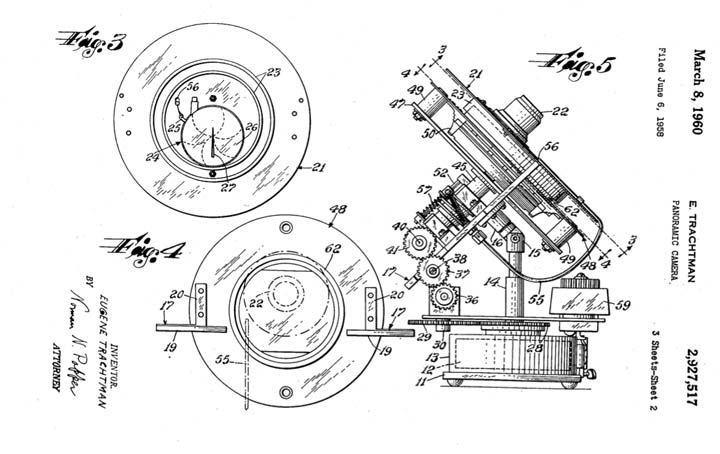 And this is my camera (does not look much different does it?) used for peripheral photograph of the teapot ... 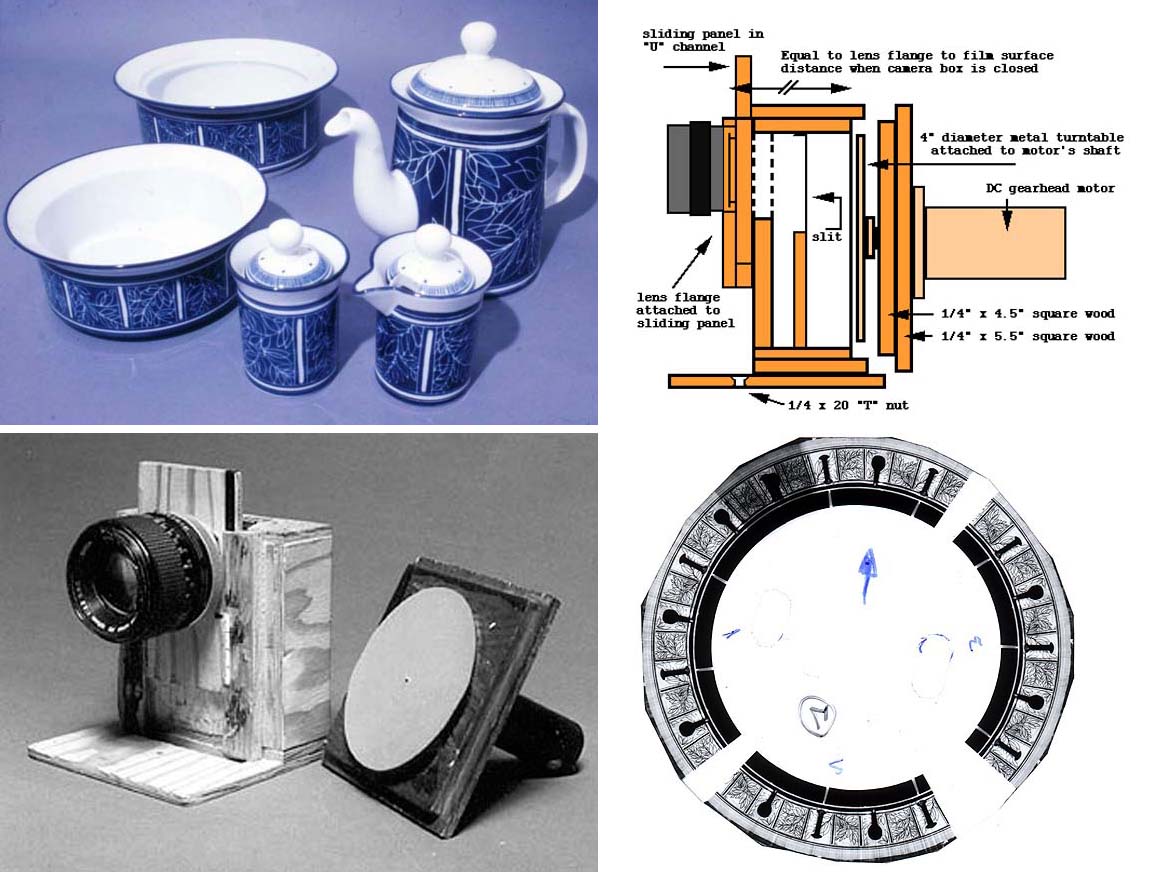 and here it is set up for panoramic photography:  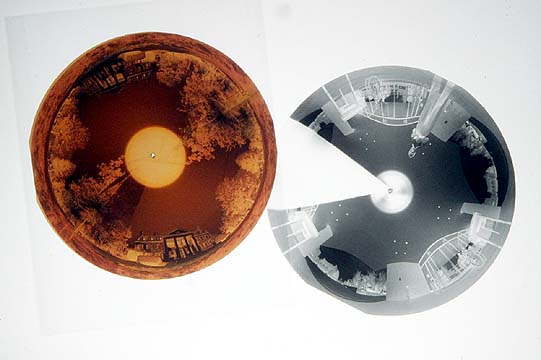 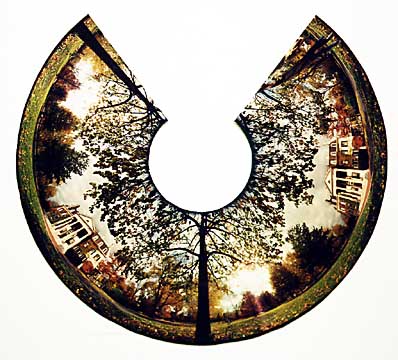 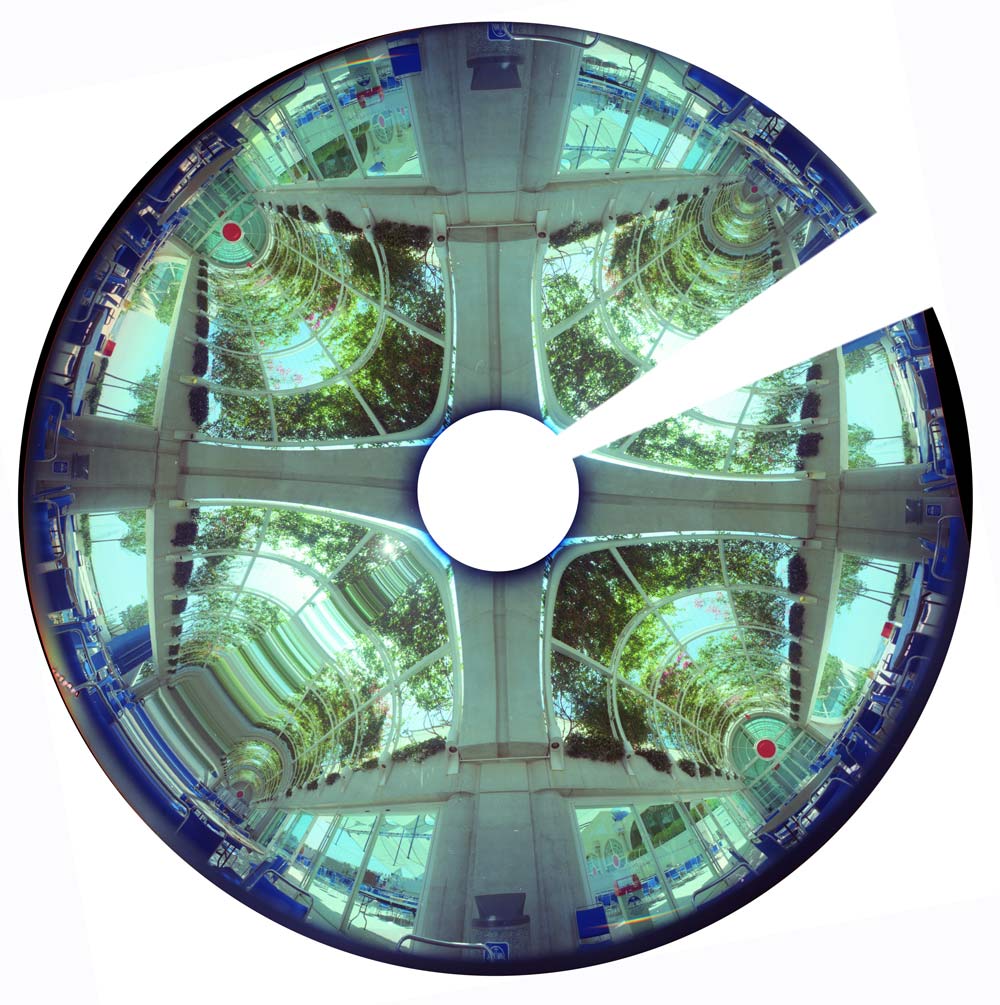 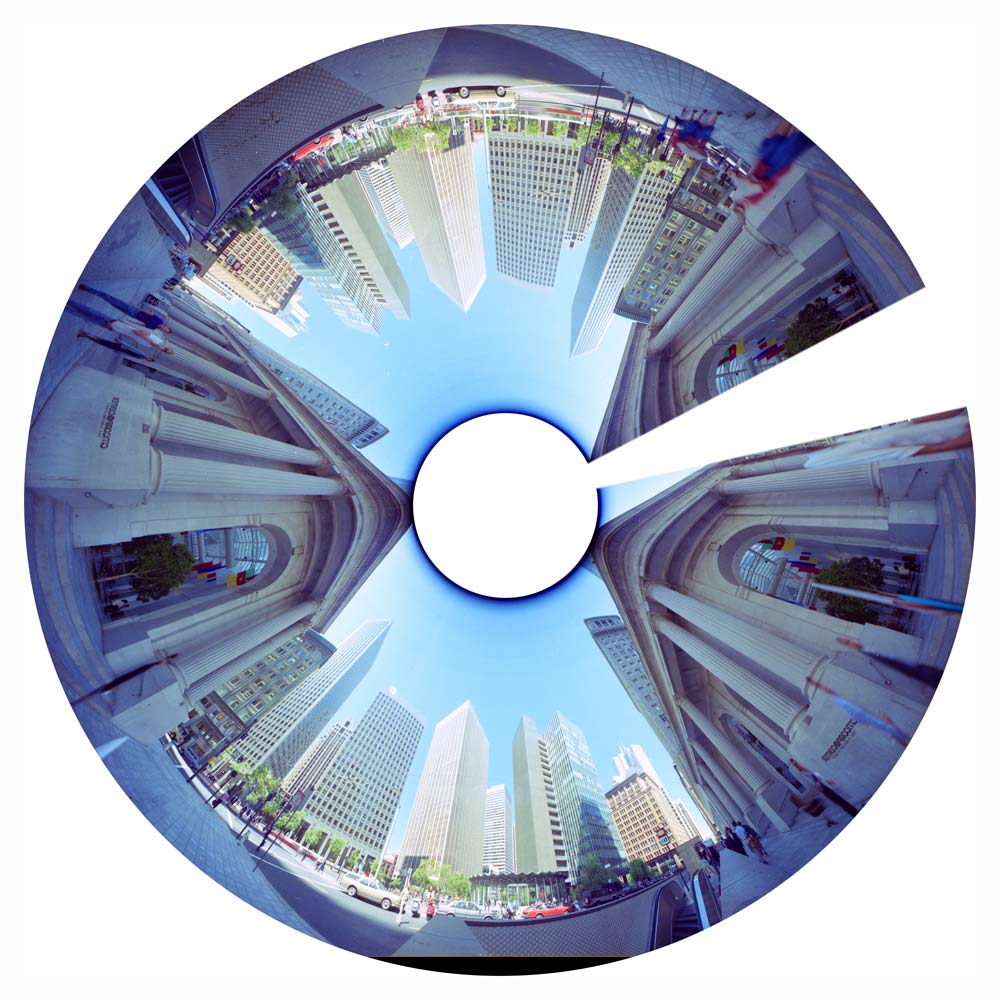 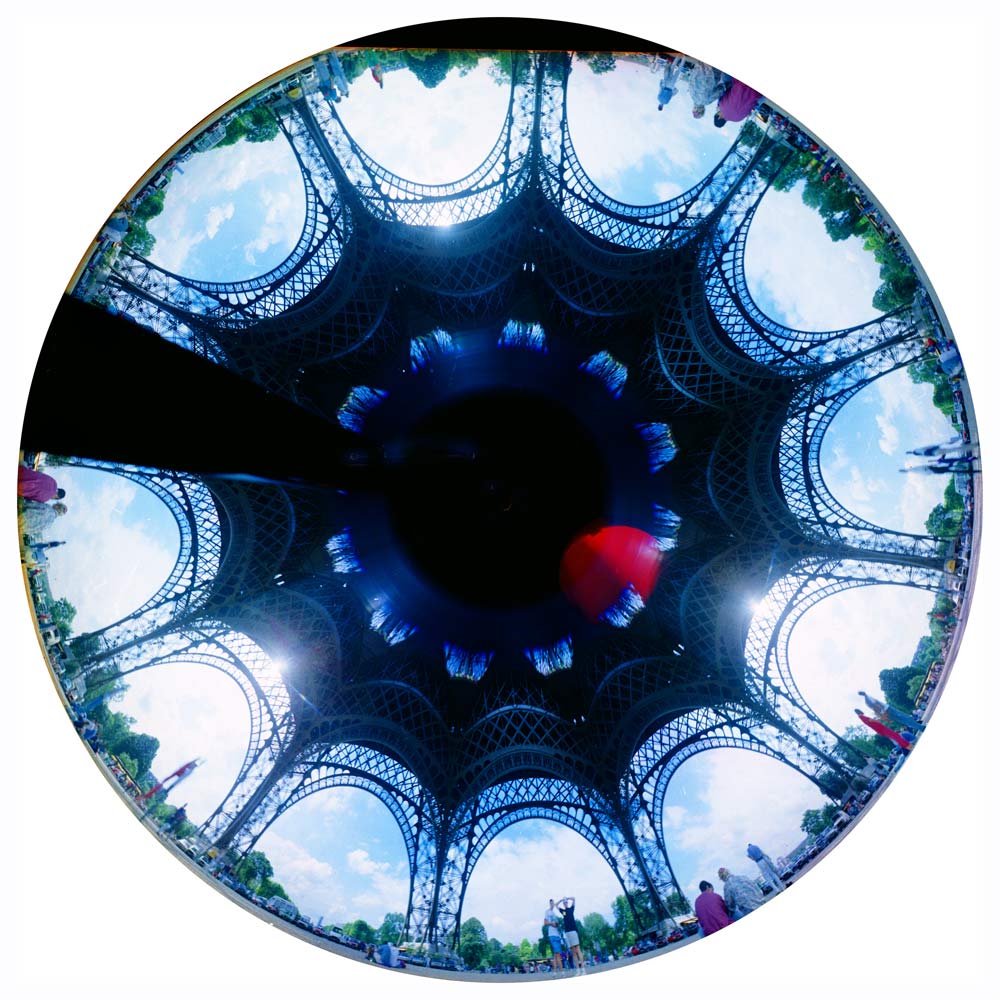 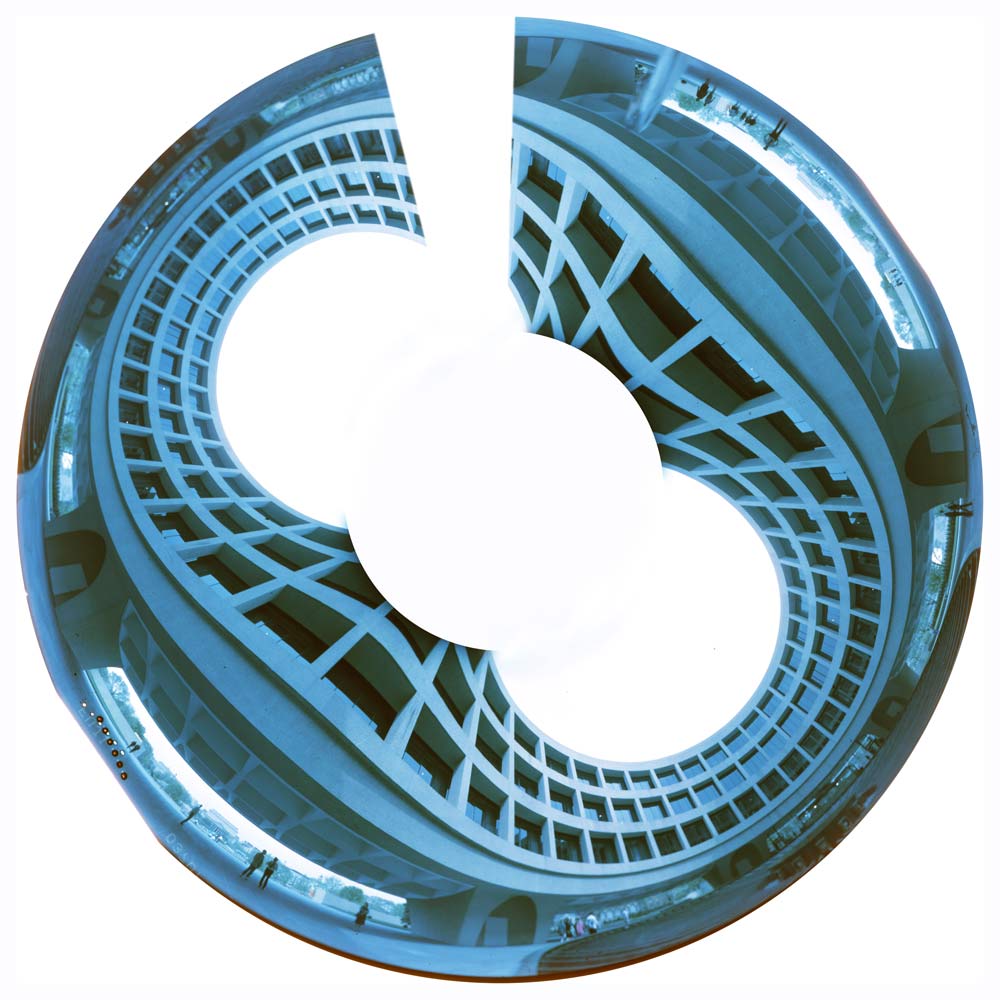 In fact, I once claimed that when the angle of view of panoramic photos extended beyond the axis of rotation of the camera (namely straight up) the camera could photograph past INFINITY! In jest but by defining infinity as that point where the projected axis of the rotation of the camera would touch the surface of a cylinder with its axis coincident to that of the rotation axis of the camera (namely at infinity!) the resulting images would show that objects beyond "infinity" are upside down, reversed left-right and 180 degrees out of phase with "reality". Really??? Finally apparently Ross Whistler ... no, it is a fact! ... is an expert panoramic camera designer/maker in his own right as testified to by the photo of his panoramic camera and results achieved with it that you can see in the two photographs reproduced at the bottom of this article..   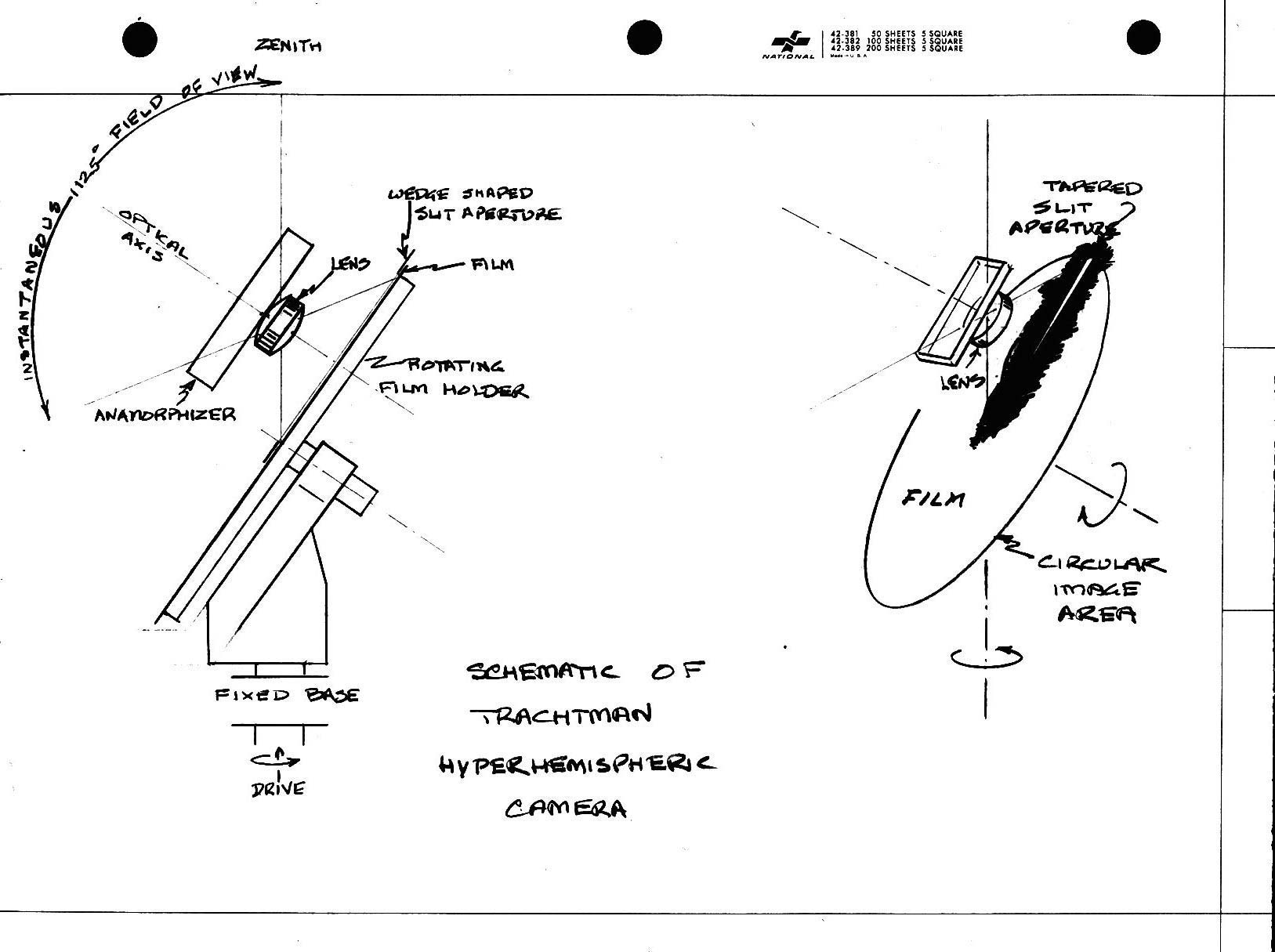     If you found this article interesting and would like to send me some feedback, suggestions, additions, etc. please write to me at: andpph@davidhazy.org |